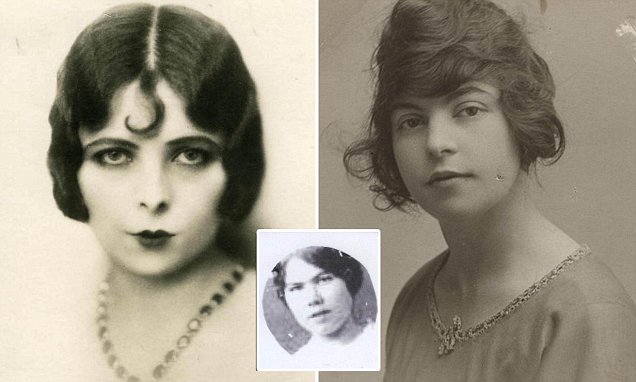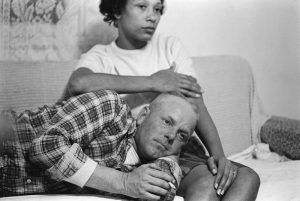The year was 1862, a time when thievery ran rampant in London’s lower class families, when women had little to no rights, and when men held the reins of society. Men ran social, economic, and political structures, but they also ran the underbelly of London. One of the most prominent gangs of London was the Elephant and Castle gang, an all-male gang that ran a complex system of robberies, kidnappings, and murder. At the same time, Mary Carr was born. Carr, born of a poor woman by the name of Jane Carr, and her husband, a notorious international thief and forger of bonds, John Carr, who led a life of crime. By 1881, Carr was already a notorious thief, with convictions starting as early as 1876 at the age of fourteen.1 With the help of the Elephant and Castle Gang, Mary Carr started the Forty Elephants, becoming their first queen due to her infamy for “fencing” or selling stolen property and pulling off successful heists. Though Carr was their first queen, the gang’s first public appearance was in an article from 1873, but some say the all female gang had been around since the 1700’s.2 Carr continued her career, changing her name several times along the way, including to Molly Mayne and Polly Carr. By 1903, she was notorious internationally, with a police report back in 1900 identifying her as the notorious Polly Carr, one of the most dangerous women in the London metropolis and Queen of the Forty Thieves (interchangeable name for Forty Elephants). Carr ran the Forty Thieves on and off between prison sentences until her suspected death in 1924.3 Carr successfully organized the Forty Elephants, but she started something else. She started the idea of a woman becoming a hoister, a person who stole and sold goods. Hoisters were becoming a lifestyle and profession for women who were locked out of the social lime light, but now could show off their skill and wealth. Becoming a hoister also meant breaking the social status of women since, with their new found wealth, they could become independent and support themselves. Unlike thieves and shoplifters, hoisters were known as professionals who were able to evade arrest and carry different aliases. Women who joined the hoister status unfortunately typically joined due to dire economic circumstances, since most shoplifters came from working and middle class families.4

After the death of Mary Carr came another Queen, Alice Diamond. Just like the former Queen, she also carried aliases, including Dolly Blake and Alice Blake.5 Born in Southwark, South London in 1886, Alice, just like Carr before her, was born to criminal parents. By seventeen, Alice already had a criminal record from thievery and was using a false identity even then. By the 1920’s, gangs plagued London and soon Alice’s record, just like Carr’s, got the attention of the Elephant and Castle Gang. Having just lost their previous Queen, the Elephant and Castle Gang eagerly accepted Alice as the next Queen. At 5 foot 8 inches, Alice was formidable and usually wore diamond rings that were used as impromptu brass knuckles during fights. After several fights with police, she was known as Diamond Annie.6 Unlike their counterparts, the Elephant and Castle Gang, Alice continued Carr’s work through the use of organized cells through various parts of London and later across Great Britain.

For women shoppers, most shops offered privacy to them when shopping. Alice, taking full advantage of that privacy, created special clothing for the women that led to the largest systematic shoplifting the country had ever seen. The clothing, lined with specially tailored pockets and multiple layers of cloth to hide goods between knickers, allowed Alice and her gang to launch several highly successful raids on London’s most elegant businesses.7 The creativity and boldness of the clothing ranged from false arms hanging out of long coats to large bags hanging underneath dresses. One nineteen-year-old thief caught in Bayswater, West London, had a bag made of Alpaca fur suspended at her waist that hung all the way down to her knees. When caught, police discovered forty-five stolen items inside.8 Alice ran the gang with precision and excellent timing. If their presence became too well known to police, Alice would order another cell in another city to take on more heists. Along with heists, many of the women would work as housemaids with credentials that usually mentioned other women. These women would ransack the home, or seduce the man into paying them for their silence.9 With the invention of the automobile, getting away became easier for the thieves. Once they pillaged stores or homes, the thieves would use (at the time) high powered automobiles to outrun police. Police documents show that even if the alleged thief was caught, the goods were not located within the vehicle. The reason for that was that the goods had already been relocated to another member of the gang (sometimes a male member) before or even during the escape. The goods would then be taken mostly by train, usually through an empty suitcase. The suitcases would be deposited around railroad stations, which would then be filled with the goods and shipped to “fences.”10 A “fence” was slang for someone who received and sold stolen goods. The goods, worth thousands of pounds, would sometimes end up in the hands of one of the most notorious fences, Ada Macdonald. MacDonald lived in a house in Walworth, South-East London and was the subject of many police raids. Each time, the authorities couldn’t locate any of the stolen goods.11
Just like other gangs at the time, Alice and the Forty Elephants guarded their territory ferociously. If a thief who was not part of their gang stole from a shop on their turf, a percentage was demanded from the thief, by an amount that depended on how much that thief stole. Those who refused were kidnapped, beaten, and subjected to ransoming. Along with demanding respect from other thieves, a list of codes known as the “hoister’s code” applied to all members of the gangs. The codes ranged from “No drinking before a raid, and early hours to bed” to “If a member is arrested others must be willing to provide an allibi.”12 Though the women were vicious, they were known to have an extravagant life. As Alice put it, they would “put on the posh,” meaning that they would dress and act of a higher social status. Combined with acting of a higher status, the Forty Elephants would host lavish parties, spend enormous amounts of money in pubs, clubs, and restaurants, fitting the 1920’s narrative of the aristocratic flapper with Alice at the forefront.13

Most members of the gang, being excellent hoisters, rarely got caught in the act. One notorious member, however, was caught. Her name was Maggie Hughes. In 1923, she had stolen a tray containing thirty-four diamond rings. While running out of the store, she ran straight into the arms of a police officer. On December 20, 1925, Alice’s rule came to an end after she and Hughes incited a riot against a former member of the Forty Elephants. Alice was jailed for eighteen months while Hughes was jailed for five.14

By the time of Alice’s release, another thief by the name of Lillian Rose Kendall had taken over the gang. Seeing how energetic, young, and creative Kendall was, she handed her position over to Kendall. Kendall, nicknamed the “Bobbed Hair Bandit” because of her short fringe and side curls, was a daring driver specializing in smash and grabs. On several occasions, Kendall used her car as a way to smash into store fronts such as Cartier’s on Bond Street.15
After Alice left the gang, their power and influence began to slip away. Hughes, being one of the more brazen of the group, was officially out of the gang by 1938. With Hughes gone and many more powerful members dead or imprisoned, the gang began to wither away.16 By the 1950’s, store security had increased and the ability to hide more items limited, due to change in clothing style, leaving less profit for the gang. By then, most members left to the countryside where smaller businesses were easier targets, but with improving economic conditions, new members were scarce leaving the Forty Elephants all but a romanticized legend. As for Alice, after leaving the gang, she founded a brothel in Lambeth, passing on tips to future shoplifters and members of the Forty Elephants. During WWII, Alice refused to leave London during evacuations. She later contracted Multiple Sclerosis and die at the age of 55 in 1952.17
- Brian McDonald, Alice Diamond and the Forty Elephants: Britain’s First Female Crime syndicate (Berkshire: Milo Books, 2015), 64-65. ↵
- Amelia Hill, “Girl Gang’s grip on London underworld revealed,” The Guardian, December 27, 2010. Accessed March 12, 2018. https://www.theguardian.com/books/2010/dec/27/girl-gang-london-underworld. ↵
- Brian McDonald, Alice Diamond and the Forty Elephants: Britain’s First Female Crime syndicate (Berkshire: Milo Books, 2015), 66, 68-69. ↵
- William M. Meier, “Going on the Hoist: Women, Work, and Shoplifting in London, ca. 1890-1940,” Journal of British Studies 50, No. 2 (April 2011): 411, 427. ↵
- Brian McDonald, Alice Diamond and the Forty Elephants: Britain’s First Female Crime syndicate (Berkshire: Milo Books, 2015), 116. ↵
- Guy Walters, “Hoodlums in bloomers: The female army of shoplifters that ransacked West End shops and hid loot in their knickerbockers,” Daily Mail, January 20, 2011. Accessed March 12, 2018. http://www.dailymail.co.uk/femail/article-1342450/Female-shoplifters-ransacked-West-End-shops-hid-loot-knickerbockers.html. ↵
- Guy Walters, “Hoodlums in bloomers: The female army of shoplifters that ransacked West End shops and hid loot in their knickerbockers,” Daily Mail, January 20, 2011. Accessed March 12, 2018. http://www.dailymail.co.uk/femail/article-1342450/Female-shoplifters-ransacked-West-End-shops-hid-loot-knickerbockers.html. ↵
- Brian McDonald, “Such very seductive shoplifters: Stuffing loot into their bloomers, how a ruthless girl gang spread havoc across London-flirting with victims or battering them with diamond-ring knuckle-dusters,” The Daily Mail, December 18, 2015. Accessed March 12, 2018. http://www.dailymail.co.uk/news/article-3366655/Such-seductive-shoplifters-Stuffing-loot-bloomers-ruthless-girl-gang-spread-havoc-London-flirting-victims-battering-diamond-ring-knuckle-dusters.html. ↵
- Kirsten Miller, “The Ultimate Girl Gang,” Old Police Cells Museum, January 25, 2018. Accessed March 12, 2018. http://www.oldpolicecellsmuseum.org.uk/content/learning/bad-girls/victorian-girl-gangs. ↵
- Kirsten Miller, “The Ultimate Girl Gang,” Old Police Cells Museum, January 25, 2018. Accessed March 12, 2018. http://www.oldpolicecellsmuseum.org.uk/content/learning/bad-girls/victorian-girl-gangs. ↵
- Guy Walters, “Hoodlums in bloomers: The female army of shoplifters that ransacked West End shops and hid loot in their knickerbockers,” Daily Mail, January 20, 2011. Accessed March 12, 2018. http://www.dailymail.co.uk/femail/article-1342450/Female-shoplifters-ransacked-West-End-shops-hid-loot-knickerbockers.html. ↵
- Brian McDonald, Alice Diamond and the Forty Elephants: Britain’s First Female Crime syndicate (Berkshire: Milo Books, 2015), 135. ↵
- Brian McDonald, “Such very seductive shoplifters: Stuffing loot into their bloomers, how a ruthless girl gang spread havoc across London-flirting with victims or battering them with diamond-ring knuckle-dusters,” The Daily Mail, December 18, 2015. Accessed March 12, 2018. http://www.dailymail.co.uk/news/article-3366655/Such-seductive-shoplifters-Stuffing-loot-bloomers-ruthless-girl-gang-spread-havoc-London-flirting-victims-battering-diamond-ring-knuckle-dusters.html. ↵
- Guy Walters, “Hoodlums in bloomers: The female army of shoplifters that ransacked West End shops and hid loot in their knickerbockers,” Daily Mail, January 20, 2011. Accessed March 12, 2018. http://www.dailymail.co.uk/femail/article-1342450/Female-shoplifters-ransacked-West-End-shops-hid-loot-knickerbockers.html. ↵
- Brian McDonald, “Such very seductive shoplifters: Stuffing loot into their bloomers, how a ruthless girl gang spread havoc across London-flirting with victims or battering them with diamond-ring knuckle-dusters,” The Daily Mail, December 18, 2015. Accessed March 12, 2018. http://www.dailymail.co.uk/news/article-3366655/Such-seductive-shoplifters-Stuffing-loot-bloomers-ruthless-girl-gang-spread-havoc-London-flirting-victims-battering-diamond-ring-knuckle-dusters.html. ↵
- Guy Walters, “Hoodlums in bloomers: The female army of shoplifters that ransacked West End shops and hid loot in their knickerbockers,” Daily Mail, January 20, 2011. Accessed March 12, 2018. http://www.dailymail.co.uk/femail/article-1342450/Female-shoplifters-ransacked-West-End-shops-hid-loot-knickerbockers.html. ↵
- Brian McDonald, “Such very seductive shoplifters: Stuffing loot into their bloomers, how a ruthless girl gang spread havoc across London-flirting with victims or battering them with diamond-ring knuckle-dusters,” The Daily Mail, December 18, 2015. Accessed March 12, 2018. http://www.dailymail.co.uk/news/article-3366655/Such-seductive-shoplifters-Stuffing-loot-bloomers-ruthless-girl-gang-spread-havoc-London-flirting-victims-battering-diamond-ring-knuckle-dusters.html. ↵



74 comments
Kacey Diaz
I thought this was a really cool article because you never really hear about female gangsters in this time period. I liked the structure of the article and how it talks about on female gangster to another. Their personal stories of how they got to where they did were similar in some ways but they eventually all ended up in the same boat.
William Ward
“Who Says A Woman Can’t Be Gangsta? Alice Diamond and the Forty Elephants” is a very nice and intriguing title, perfectly introducing the article without giving anything away. With as many legendary outlaws and gangsters that are talked about even today, it is somehow new to hear about such a gang made entirely of women. It is quite impressive, regardless of gender, to run such a successful business of burglary for so many years and even generations.
Avery Looney
The title of this article really grabbed my attention because you do not hear about female gangsters often. The article was very well written and described the background of the woman and their lifestyles in great detail. When I hear the word “gangster” I never think of a woman. It was very interesting to see how these woman: Alice Diamond, Maggie Hughes,and Lillian Rose Kendall were able to run a large and successful gang. This article goes to show that women are just as capable as men in whatever they chose to do.
Nathalie Herrera
The title of this article grabbed my attention immediately. The details of the different techniques of thievery used by the gang, Forty Elephants, was also very intriguing. Through taking advantage of their dresses and beauty they were able to steal anything they desired. Their shoplifting skills during that time seems ridiculous, but because they lived in a time where security was not as efficient as today, it was practical. Not only this, but the fact that this gang consisted of women is fascinating, because no one would expect a “lady” to steal or be part of gang, especially in that era. Overall great read!
Taylor Rech
I found this article very entertaining. The chronological order of the women taking over the gang’s leadership was intriguing, and I found myself wanting to know what happened to the women and how they ended up out of power and leadership within the gang. Additionally, I found the background information of the three women interesting because it allowed me to draw similarities between the women while I was also able to differentiate between the three various styles of hoists that each woman chose to use that set them apart from each other.
Stephanie Nava
I really love the title of this article. Even though it is about thieves, it is very cool to know that women have always been so smart and were able to get away with more. I also enjoyed reading the introduction to this article, it definitely keeps the reader interested in the rest of the story. This article was fun to read and I am glad that women back then were able to work together to outsmart the very society that was trying to keep them down.
Annissa Noblejas
The creation of an all women gang was a brilliant exploitation of the time’s social and legal system. Women were given more privacy and thought too delicate in nature to debase themselves to lives of crime on such grand scales. They took full advantage of such sympathies and wreaked havoc first across London and then throughout the country. These women proved to be organized, cunning, and ruthless outlaws.
Clarissa Gonzalez
This article was interesting to me because it focused on past women involved in crime. And very successful ones at that. These women were taking the crime scene in London by storm. People know them and what they do, seeing them as professionals. It’s just really interesting to see women being studied so closely, even if it is for crimes and being a part of a gang. That is something people just assume men run, and seeing a new point of view for that was a really nice change of pace.
Eloisa Sanchez Urrea
I always feel so proud when I see a woman that is able to break free of the shackles that define what women can do. I know that being in a gang may not be right, but she proved that being a woman was not a reason why one could not do it. As the article mentioned, what Mary Carr did was, “break the social status of women.” She demonstrated that women can be just as brave and intelligent as men.
Roman Olivera
This was an intriguing article for the fact that it shed a little light on a subject not talked about often, women in crime. Mary Carr and Alice Diamond were two woman with a drive to succeed by what ever means necessary. It was not surprising to see that the both of them came from families of criminals, but what was surprising was the fact that they both chose this life at such a young age. Their rise to the lead positions as Queen in the start of the notorious Forty Thieves or more commonly known as the Forty Elephants, was really something that set them apart from the other woman criminals of the time. They also lead groups of women organized to commit crimes in the masses, as well as committing fraud through the selling of the goods they stole. To see that these women were a success in the criminal world does show, as the title question of this article states, that woman can be gangstas. Unfortunately for these ladies a life of crime does not pay and the fruits of their labors went sour. This article give me a different take on a genre of crime that I had not previously explored. Great work!